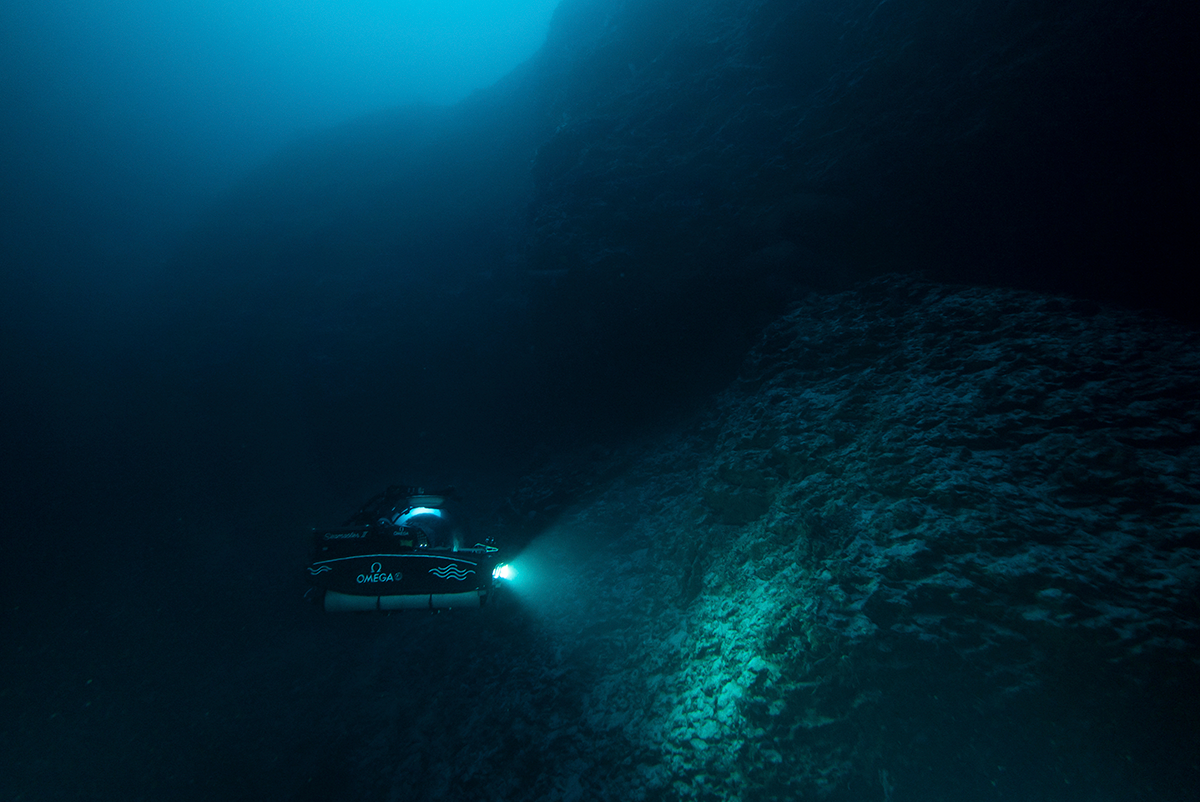VIDEO: New Deep Ocean Ecosystem—‘The Trapping Zone’—Discovered in the Maldives
Go nearly a third of a mile deep in the Indian Ocean and you will hit an oasis of life, researchers in the Maldives recently discovered.
The previously undescribed ecosystem—which the discovering researchers on the Nekton Maldives Mission have named “The Trapping Zone”— houses piles of micro-nekton. Micro-nekton, which can swim independently from the current, typically migrate from the deep sea to the surface at night and dive back into the deep at daybreak. In The Trapping Zone, however, they have become, well, trapped, and now serve as the basis of the food chain in this new ecosystem.
Examining the topography of the Maldivian ocean floor provides some clues as to why this happened: Deep sea atolls formed by volcanic subsea strata and fossilized carbonate reefs have steep vertical cliffs and shelved terraces. Scientists believe these structures trap the micro-nekton against the subsea landscape more than 1,600 feet below the surface, preventing them from diving deeper as the sun rises. They are then targeted by large pelagic predators like tuna and sharks.
The Nekton Maldives Mission, which ran from September to October, is a partnership between the English nonpriot research institute Nekton, the University of Oxford, the Government of the Maldives and other organizations. Its goal is to conduct the first systematic survey of ocean life in the Maldives, from the water’s surface down to 1000 meters deep. Prior to this research, almost nothing was known about what lay below 90 feet deep in this region. The results will inform conservation and sustainable development policies.
To form the hypothesis that this is indeed a previously unknown ecosystem, scientists reviewed video evidence from Nekton cameras mounted on a submersible, collected biological samples and did extensive sonar mapping.
"This has all the hallmarks of a distinct new ecosystem," says University of Oxford Professor Alex Rogers, who spent over 30 hours underwater in the mission's submersibles observing The Trapping Zone during the expedition. "The Trapping Zone is creating an oasis of life in the Maldives, and it is highly likely to exist in other oceanic islands and also on the slopes of continents."
While a trapping effect has been associated with other biodiversity hotspots on seamounts, this study is the first to link that effect to different geomorphology and biological parameters of oceanic islands like the Maldives. The discovery could also have implications for other oceanic islands when it comes to sustainable fisheries management, carbon burial and storage and climate change mitigation.
The “discovery of The Trapping Zone and the oasis of life in the depths surrounding the Maldives provides us with critical new knowledge that further supports our conservation commitments and sustainable ocean management, and almost certainly support fisheries and tourism,” says Maldivian president H.E Ibrahim Mohamed Solih.

When you subscribe to the blog, we will send you an e-mail when there are new updates on the site so you wouldn't miss them.
